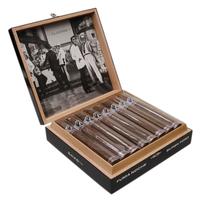Hello Gentlemen. As a fairly new pipe smoker, I have much to learn, and it's all enjoyable. Today I'm sitting in the sun smoking Amphora Virginia in my Savinelli 316 and marvelling at the wonder of the pipe. Essentially I'm smoking a plant (tobacco) in an instrument which is also a plant (the pipe). Obviously this requires that the combustion temperature of tobacco must be substantially lower than the combustion temperature of briar, or else once the tobacco is gone, my pipe itself will burn until nothing will be left but the stem hanging out of my mouth. This will never do.
So, I did a 5-minute internet search on the combustion points of both substances. Now, I realize many of you already know this, but I want to share what I learned for the newer pipe-lovers. According to what I read, tobacco burns at approximately 500 degrees C. (932 degrees F.), whereas briar will burn at approximately 700 degrees C. (1292 degrees F.) This means briar can handle an additional 200 degrees C. or nearly 400 degrees F. before it begins to burn.
It strikes me this gives us plenty of "headroom" and means we needn't worry about our pipes burning up on us. Of course, there are variables which can change this situation such as poor quality briar, serious flaws in the briar, etc., and obviously with a multitude of bowls smoked the briar can begin to degrade, but it seems to me that overall briar is a magical substance.
This understanding makes me even more grateful for those men over the past couple hundred years who sorted all this out and developed for us this most remarkable smoking device. Cheers to you all as you enjoy a bowl today!
So, I did a 5-minute internet search on the combustion points of both substances. Now, I realize many of you already know this, but I want to share what I learned for the newer pipe-lovers. According to what I read, tobacco burns at approximately 500 degrees C. (932 degrees F.), whereas briar will burn at approximately 700 degrees C. (1292 degrees F.) This means briar can handle an additional 200 degrees C. or nearly 400 degrees F. before it begins to burn.
It strikes me this gives us plenty of "headroom" and means we needn't worry about our pipes burning up on us. Of course, there are variables which can change this situation such as poor quality briar, serious flaws in the briar, etc., and obviously with a multitude of bowls smoked the briar can begin to degrade, but it seems to me that overall briar is a magical substance.
This understanding makes me even more grateful for those men over the past couple hundred years who sorted all this out and developed for us this most remarkable smoking device. Cheers to you all as you enjoy a bowl today!







